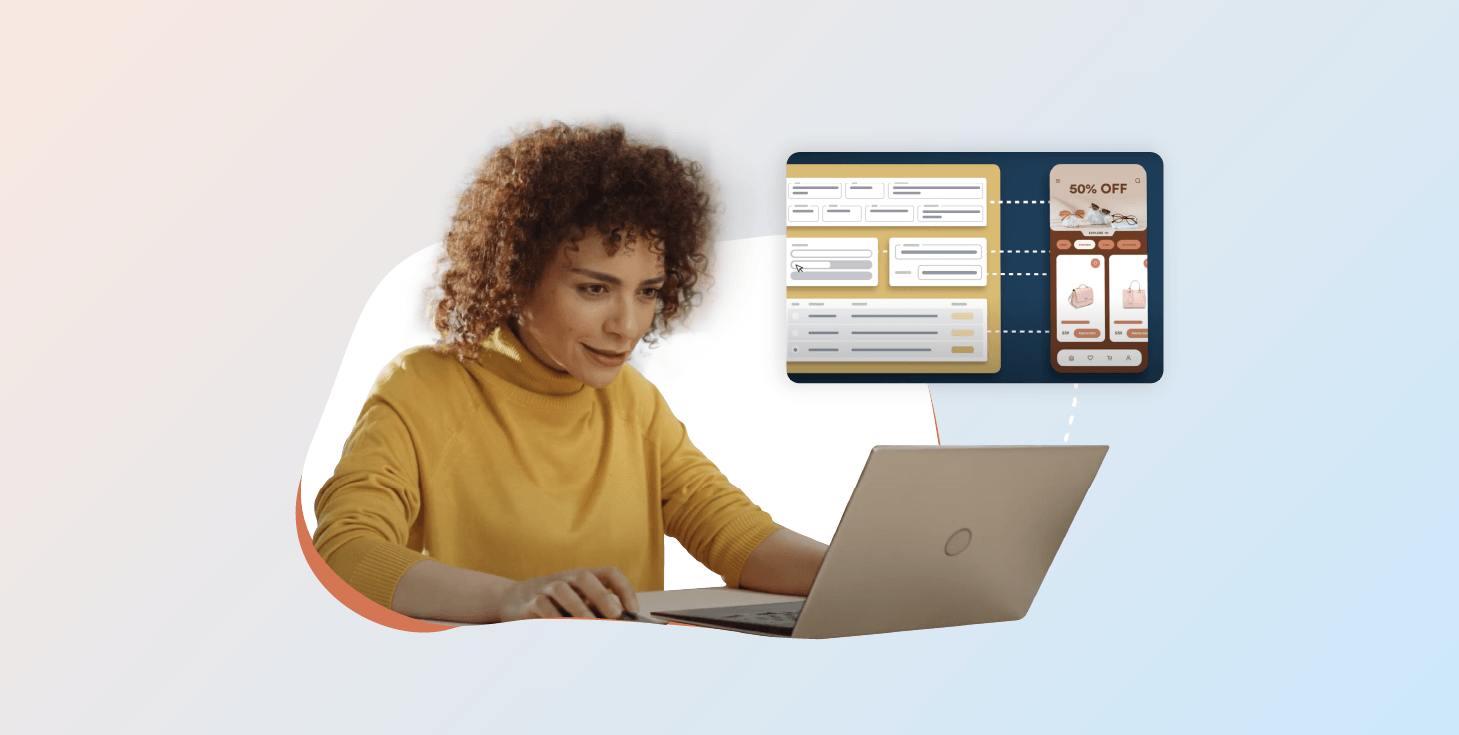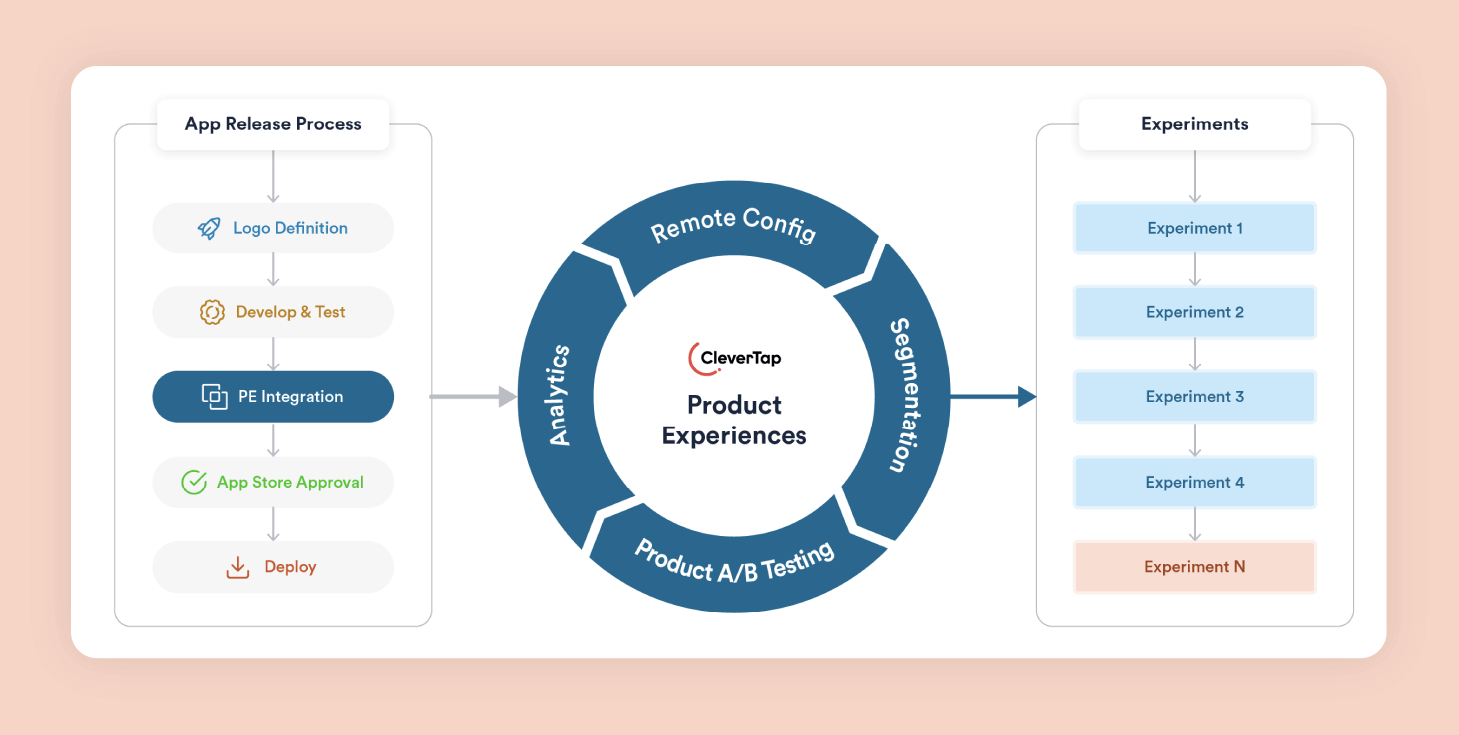Learn how you can Unlock Limitless Customer Lifetime Value with CleverTap’s All-in-One Customer Engagement Platform.

Did you know that $300 billion is lost annually due to poor online experiences? Brands that ignore UX are leaving billions on the table. In today’s hyper-competitive landscape, even minor missteps can cost you loyal customers. As a product manager and marketer, how can you turn challenges into opportunities for growth? Let’s find out.
Customers increasingly expect personalized experiences that are fun, engaging, and seamless across all channels. This expectation places significant pressure on product managers and marketers, who must navigate complex challenges to meet these demands.
Investments in product development—whether for apps or websites—become futile if users abandon your app after the initial download due to subpar user experiences.
Moreover, while strategic marketing campaigns can drive visibility, they will only yield results if the right customers are targeted with relevant user experiences when they land on your app and website. Without this precision, marketing efforts can fall short of their intended impact.
In both cases, the failure to optimize user experiences on apps and websites not only impedes product managers and marketers from achieving their business objectives but also undermines sustainable profitability. This underscores the need to optimize app and web experiences now more than ever. Let’s take a deeper look at other factors that make it imperative to excel in the optimization game in today’s context.
In today’s competitive market, maintaining user engagement beyond the initial download is a critical challenge. Remarkably, 50% of users uninstall an app within 30 days. This sharp decline in user retention results in significant financial losses for companies, even as they invest heavily in acquiring users who often abandon the app before realizing any meaningful value. To tackle this issue, you need to focus on strategies that enhance user experience and ensure sustained engagement.

In today’s fast-paced digital world, 25% of users abandon an app after just one use, highlighting shrinking attention spans and the demand for instant value. This trend underscores the urgency for apps to deliver quick, effective functionality, as those that fail to do so risk being uninstalled before users have a chance to fully explore them. Addressing this challenge requires capturing user interest from the start and providing seamless experiences from the very first interaction.
With users able to download alternative apps so easily, the competition is fierce. Any bad experience—like slow performance, confusing navigation, or poor personalization—can drive users away fast. McKinsey’s studies show that a whopping 70% of users ditch apps because of sub-par in-app experiences, and 76% get frustrated when brands don’t offer personalized interactions. In this intense game, even small mistakes can push users to a competitor’s app. To overcome this challenge, you need to continuously tweak and improve your app’s user experience to stay ahead.

It is imperative for marketers and product managers to optimize app and web experiences to create seamless, intuitive, and personalized interactions for customers. According to the CleverTap’s Market Research Report “The State of App and Web User Experience Optimization,” both groups strongly support this strategy. 95% of product managers and 88% of marketers believe that web and app experiences play a significant role in customer engagement and retention.
However the report also highlights challenges faced by them. Among product managers 54.6% can set up experiments in a week or less, while 46.4% take 15 days or more, with 36.4% taking exactly one week. The fact that nearly half of the respondents take 15 days or more to launch an experiment points to potential inefficiencies in their processes.
The market research report further revealed that the biggest challenge for product managers is a lack of resources, cited by 46.2%, followed by issues with data and analytics at 30.8% and tech problems at 19.2%.
Despite concurrence amongst both product managers and marketers about the importance of frequently refreshing app and web experiences, 58% of product managers are unable to support marketers in experimenting with key app and web experiences, such as onboarding flows, banner placements, and homepage layouts. This points to a disconnect in enabling experimentation and collaboration, even though product managers and marketers play complementary roles throughout the user lifecycle, from onboarding to re-engagement.
The report further states that 64% of marketers find it challenging to experiment with different variations of web and app experiences, before making changes to experiences like onboarding flows, app content, and homepage layout. Additionally, a concerning 24% even consider it impossible.
This data reveals that nearly 9 out of 10 marketers face significant obstacles in maintaining and optimizing their digital touchpoints. The findings suggest that the complexity of processes, such as cross-functional collaboration with engineering teams, is a major roadblock.
Now that we’ve explored the challenges, let’s dig into the root cause of the problem.

Your web and app optimization issues could stem from traditional methods of personalization and experimentation which requires multiple release cycles. These app release cycles are complex, time-consuming, and resource-intensive, involving processes that are neither scalable nor cost-effective. Moreover, they lack the agility needed to respond to market demands and adapt to the rapidly evolving business landscape.
The need of the hour, or rather the need of the moment, is a process that allows both marketers and product managers to effortlessly experiment and make swift changes to the app’s design, functionality, and workflows. This process should require minimal technical dependency.
Be it A/B testing onboarding, experimenting with add-to-cart flow variants, updating banners, managing dynamic pricing, and modifying content. So how do you effortlessly experiment and personalize customer experiences across web and apps?
What if we told you that you could make seamless, real-time enhancements in seconds that drive user engagement, boost loyalty, and promote sustainable profitability? Free yourself from the never-ending cycle of multiple app release cycles, each time you make a tiny or rather a big change to your web and app experiences. Now, it’s super easy, instant, and can be done remotely with a no-code approach. CleverTap offers you a one-stop innovative solution to address all your web and app optimization woes.
With Product Experiences, you can personalize and experiment with app and web experiences in a no-code way, driving operational efficiency, ensuring your business remains agile and responsive to market demands.
As illustrated in the diagram below, a single app release that incorporates product experience integration allows for an unlimited number of modifications to both app and web experiences. This enables you to conduct numerous experiments without the need for additional release cycles.

Let’s take a deeper look at the key components of Product Experiences that empower product managers and marketers to elevate app and web experiences with ease.
With CleverTap, you can map app and web functionalities, along with UI elements, as variables. These variable values can easily be modified to effortlessly control the user experience directly from the CleverTap dashboard without any additional app releases.
You can create precise segments using zero-code and simple conditional statements. Then, override the default variable values to personalize the user experience for specific audiences.

For example, in the image above, each of the bank’s services—such as savings accounts, digital gold, car loans, and home loans—is represented by individual cards. Every element within these cards, from the text and images to the card’s position, is mapped as a variable on the CleverTap dashboard. This allows you to remotely control and customize the app’s interface. For instance, a savings account customer might see the savings card at the top, while a car loan customer may see the car loan card prioritized instead. Each card and its components are dynamically adjustable, ensuring personalized experiences for different users based on their preferences or needs.
Product Experiences enables you to set up A/B tests by defining variants using variables related to UI, functionality, and workflows, allowing you to test multiple possibilities. For example, as illustrated in the image below, you can experiment with versions of the game onboarding flow by creating two variants, A and B, to guide users through two different onboarding experiences effortlessly without writing a single line of code.

You can assess the performance of different variants with detailed analytics and release the most successful version based on key performance indicators (KPIs). For instance, the below image illustrates how you can analyze the experimental results and make informed decisions. It provides insights into the performance of the various variants, enabling you to determine which option is most suitable for your audience.

In today’s fast-paced digital landscape, it’s imperative for product managers and marketers to collaborate and stay aligned across the entire customer lifecycle. From the moment users onboard, both teams play critical roles—marketers run campaigns to engage new users, while product managers shape the in-app experience to ensure seamless onboarding. As users progress, engagement becomes key: marketers launch new features and services via campaigns, while product managers test and refine these features for optimal functionality.
When it comes to monetization, marketers are responsible for running promotions and offers, whereas product managers focus on optimizing pricing strategies. Finally, during re-engagement efforts, marketers run win-back campaigns to rekindle interest, while product managers optimize in-app experiences to increase retention.
Product Experiences enable this collaborative effort by giving both teams the tools to experiment and optimize without needing constant development cycles. This collaboration fosters a cohesive user journey—balancing revenue goals, customer satisfaction, and retention—by empowering both sides to work in harmony.
So, how does Product Experiences make your job as a marketer and product manager easier, and how does it drive better results for your business? Let’s find out.
Product Experiences enable Growth Teams to independently manage in-app monetization and personalization. Implement once and enable the creation and execution of in-app experiences without additional app updates.
You can put an end the constant backlog of promotions and app config tickets your engineers are working against. Liberate engineering teams to focus on what’s most important – new feature development.
Product Experiences enables you to reduce promotions and app config setup time by removing engineering bottlenecks. Build and analyze segments with the touch of a button – no SQL or coding required. Helping you stay agile and at speed with the market demands.
Let’s take a look at how Product Experiences is empowering leading brands across various industries to personalize web and app experiences and enhance customer lifetime value.

Challenge: Tesco’s product details section became cumbersome due to extensive feature details and legal information. This lengthy page pushed the “Add to Cart” button far down, making it difficult for customers to see and purchase items.
Solution: To address this issue, Tesco utilized CleverTap’s Product Experiences and introduced a persistent “Add to Cart” button as part of an A/B test.
Impact: Initially, this change led to a 19% decrease in items added to carts. In response, Tesco conducted a subsequent test featuring both a static and scrolling “Add to Cart” button, which resulted in a 3.3% increase in cart additions. This successful outcome led to the full implementation of the revised button design and further optimization efforts.

Challenge: IMVU experienced a significant drop-off when users landed on its home screen, which was attributed to an unoptimized onboarding experience.
Solution: To address this issue, IMVU used CleverTap’s Product Experiences to introduce a segmented home screen experience. The goal was to boost engagement, increase the time users spent on the app, and drive more in-app purchases.
Impact: The implementation led to notable improvements, including a 5% increase in user retention, a 13% rise in in-app purchases, a 7% increase in in-app chats, and a 17% boost in sharing activity. Additionally, A/B testing showed that offering 10,000 free credits instead of 2,000 resulted in a 157% increase in retention and doubled the average revenue per user (ARPU).
Challenge: MyPostcard, a Berlin-based mobile app founded in 2014, faced difficulties in improving conversions, maximizing user retention, and gaining deeper insights into user behavior to refine their offerings.
Solution: To tackle these challenges, MyPostcard leveraged analytics and A/B testing, and user engagement capabilities. This shift enabled them to better understand their users and make real-time adjustments based on the insights gained.
Impact: Through enhanced analytics and A/B testing, MyPostcard achieved a remarkable 318% increase in signups for select user groups within just a year and boosted user value at key check points by 16% within a month through A/B testing.
Challenge: App Annie’s B2C Apps team sought to enhance the onboarding conversion rates for its “My Data Manager” app, designed to help users track mobile data usage and save money. With millions of users, implementing product changes posed significant risks, making it essential to ensure updates wouldn’t negatively impact user behavior.
Solution: App Annie conducted a series of mobile A/B tests focused on optimizing the onboarding process. The platform allowed the team to manage tests across a diverse user base and measure multiple metrics, providing a comprehensive view of user behavior and the effects of potential changes.
Impact: The A/B tests resulted in a significant 15% increase in onboarding conversion rates, positively impacting App Annie’s business. Leanplum ( now CleverTap) intuitive evaluation process facilitated quick analysis of results, enabling the team to assess how changes influenced user behavior effectively.
Customers increasingly demand personalized experiences that are enjoyable, engaging, and seamless across all channels. This expectation places significant pressure on product managers and marketers, who must navigate the complexities of multiple app release cycles to keep up with the cut-throat competition, diminishing user attention span and ever changing market trends.
The imperative now is to adopt a process that empowers both marketers and product managers to experiment and implement swift changes to the app’s design, functionality, and workflows with minimal technical dependency.
With CleverTap’s Product Experiences, personalizing and experimenting with your app or website has never been easier or more efficient. By breaking free from the repetitive cycle of multiple app release processes required for every minor or major change, organizations can significantly streamline their operations. With a no-code approach, these activities are not only straightforward but also instant and manageable from anywhere.
Stay ahead of the curve and transform your digital experience with Product Experiences and deliver personalized, impactful interactions with minimal effort. The future of user experience is here—embrace it and watch your business thrive. Learn more. 